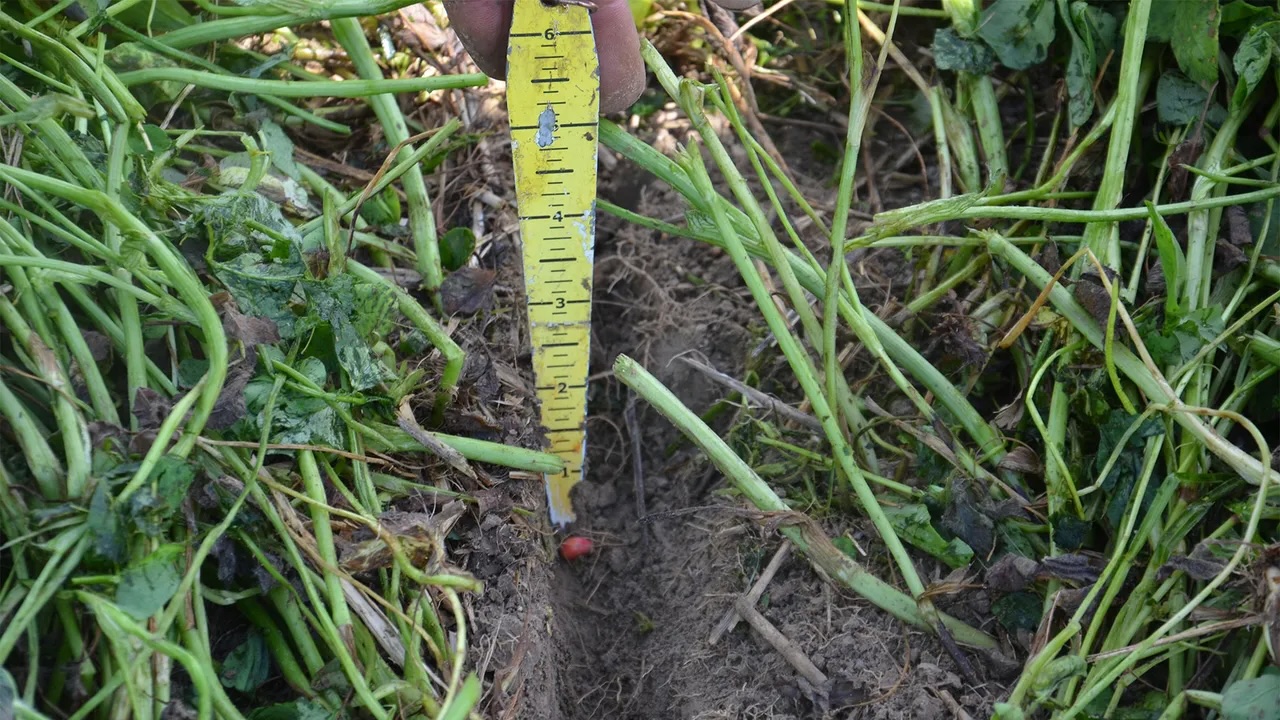Soybean spacing: What research says about 15 vs. 30 inches

Soybean Corner: These CCAs suggest considering wide spacing only where white mold may be a significant threat.
Nov 30, 2022
I plant soybeans in 15-inch rows. My neighbor reverted to 30-inch rows and saw less disease. Should I switch? What are the trade-offs?
The Indiana certified crop adviser panel answering this question includes Danny Greene, agronomist with Greene Crop Consulting Inc., Franklin; Marty Park, sales agronomist with Gutwein Seed Services, Rensselaer; Jesse Uebelhor, agronomist with Superior Ag, Jasper; and Shaun Casteel, Purdue Extension soybean specialist.
Greene: The soybean checkoff program summarized university research and indicated that soybeans in 15-inch rows or narrower provided a yield advantage 69% of the time compared to 30-inch rows.
Narrow-row advantages are typically greater with later planting, earlier-maturing varieties and under high temperatures, which reduce time to maturity. Weed control may be better with quicker canopy closure.
If you have a field with a history of white mold, wider rows reduce hours of high humidity in the lower canopy. However, resistant varieties and a planned fungicide application could more confidently help protect soybeans.
Narrower rows better use nutrients, water and sunlight earlier in the season. Thirty-inch rows allow sunlight to reach lower leaves later in the growing season, especially with earlier-planted or longer-season varieties.
Park: Planting 30-inch rows might be beneficial where there’s history of white mold because more air gets through the canopy. However, 15-inch rows yield better on lower organic matter and variable soils, and shade rows quicker, aiding moisture conservation and weed control. Only consider the wider spacing if you’re fighting white mold.
Uebelhor: Most yield data leans toward higher yields when planting beans on narrow or 15-inch rows. On 30-inch rows, you will experience fewer diseases as more sunlight and air can reach the canopy floor, creating less hours of leaf moisture.
For 30-inch rows, consider variety selection first. Select varieties with a bushy canopy type. Second, make sure the variety has good standability. There is a 10% to 15% reduction in seeding rate, which could save seed costs. But you’ll spend more dollars on chemicals.
Planting early is a must in 30-inch rows so you can capture maximum sunlight and achieve canopy closure by summer solstice. Only consider this if you’re planting very early.
Layer herbicide residuals every 21 to 28 days to stay ahead of weeds. This may take two in-season residual applications.
Casteel: Soybeans in 15-inch rows generally will outyield 30-inch rows by 5% to 10%, depending on planting date. The yield difference is quite small when planted in late April to early May, but yield differences widen well into May and certainly June plantings. Wide rows typically take another 25 days to close rows. Rate of canopy closure becomes very important when planting later. We’ve seen a more synergistic yield benefit with intense management in 15-inch rows compared to 30-inch rows.
Now, this changes with a history of disease pressure such as white mold. Narrow rows and high plant populations create a dense canopy that can lends itself to disease development when temperatures are moderate and rainfall and/or humidity is high during flowering. In this situation, reducing plant population and planting in 30-inch rows can help, plus timely fungicide applications during flowering.
So, row width decision should factor in disease history, typical planting window, weed pressure and your level of management.













